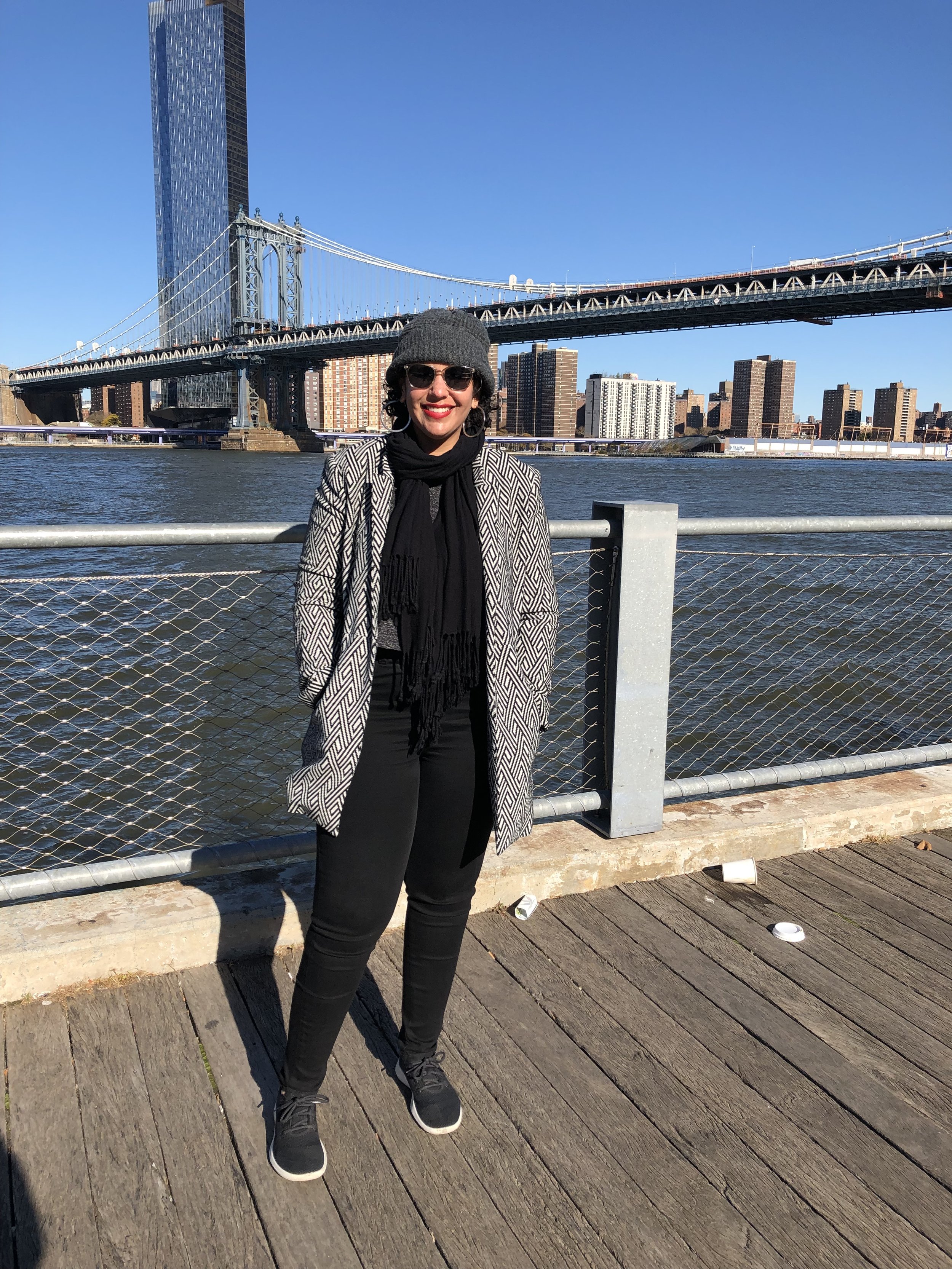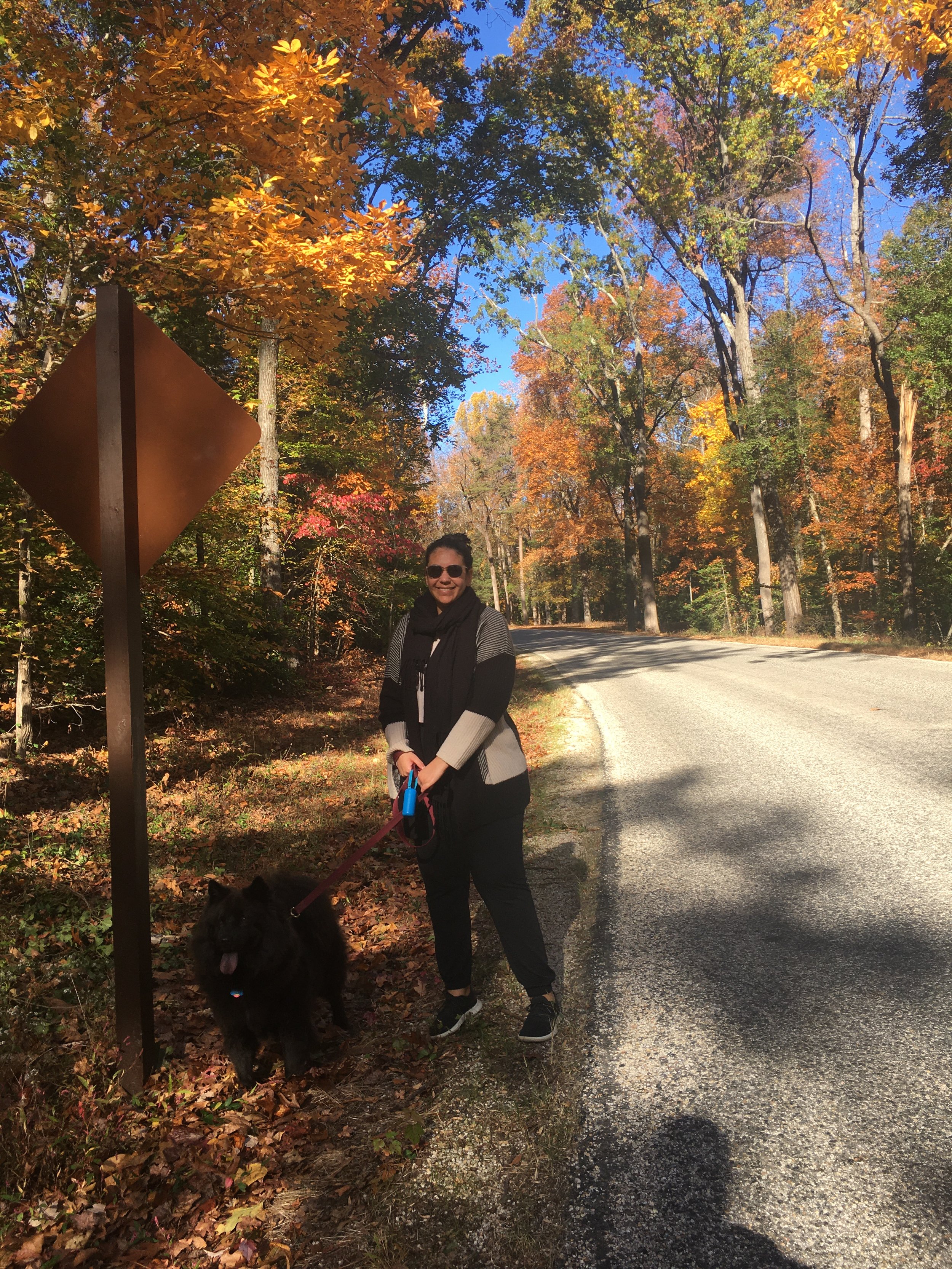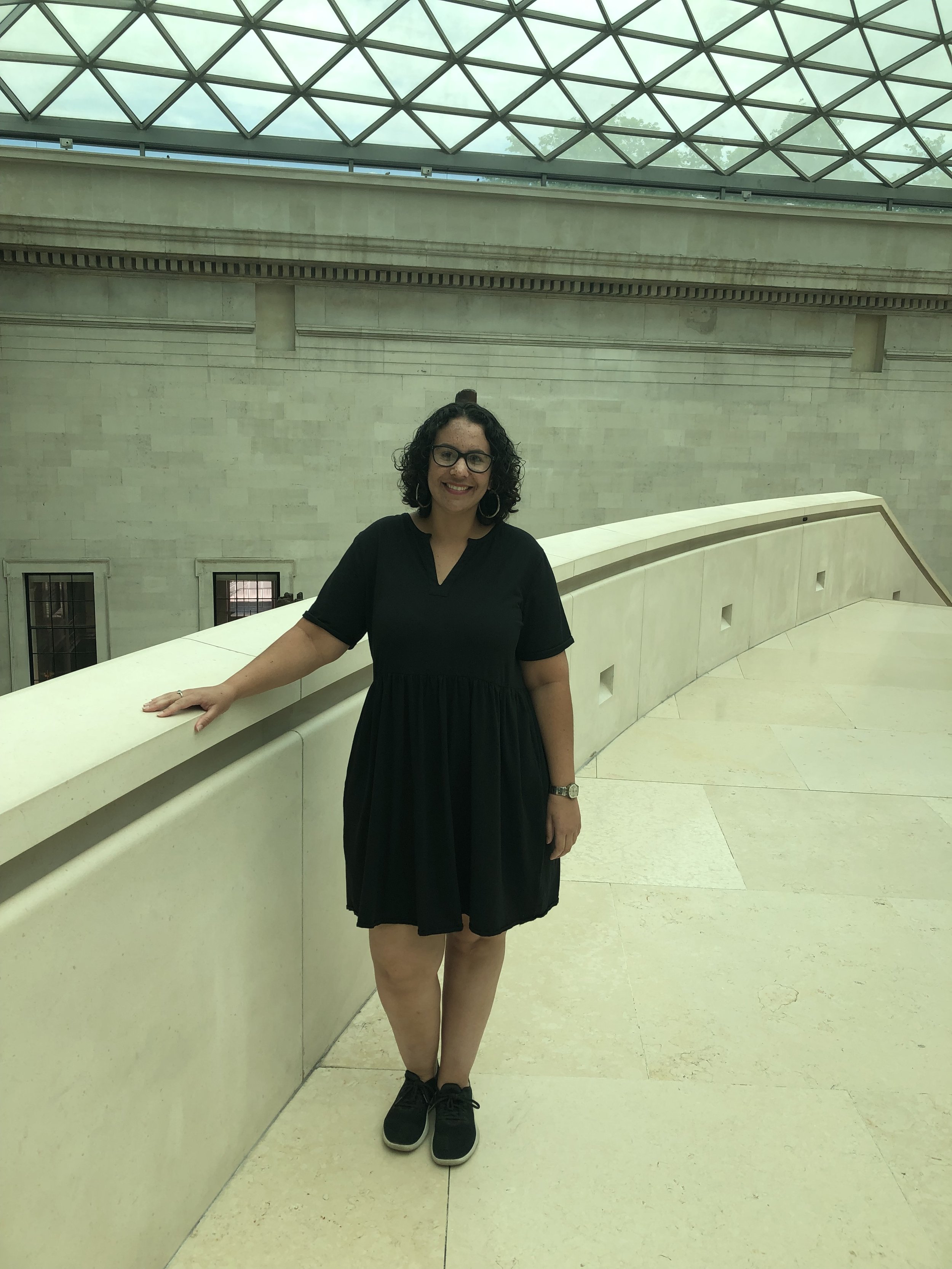AMS Alumni Spotlight—Dr. Gaila Sims
Name: Gaila Sims
Pronouns: she/hers
Title: Curator of African American History and Special Projects at the Fredericksburg Area Museum
Contact information: gsims@famva.org
Q: What were your research interests, both academic and for fun, while in American Studies at UT!?
A: Museums! While at UT, I took classes in Museum Ethics, Public and Digital History, and Museum Education, and wrote papers about living history interpretation at Colonial Williamsburg, Lonnie Bunch and the development of the National Museum of African American History and Culture, and tourism at “slave castle” museums on the coast of Ghana. I wrote my Master’s Report about the Whitney Plantation Museum in Wallace, Louisiana, and my dissertation on representations of slavery at state history museums in Texas, Louisiana, Missouri, Arkansas, and Mississippi.
I visited museums for fun, too. I was constantly inspired by the amazing work showcased at the Art Galleries at Black Studies housed on UT’s campus, and made special trips to Houston and San Antonio to visit the Museum of Fine Arts, Houston, the Houston Museum of African American Culture, and the McNay Art Museum (among many others). One of my favorite exhibitions was “The Dirty South: Contemporary Art, Material Culture, and the Sonic Impulse,” curated by Valerie Cassel Oliver at the Contemporary Arts Museum Houston, which I was lucky enough to visit in 2021. Texas has some seriously underrated museums, and I made sure I took full advantage while I was a grad student.
Q: How did you make your way to American Studies as a discipline?
A: I was working at a small African American museum in East Austin, the George Washington Carver Museum and Cultural Center, when I decided to apply to graduate school in late 2015. I knew I wanted to continue working at museums, but I wanted the scholarly training and expertise I realized I needed to continue rising in the field. I applied to programs in Ethnic Studies and American Studies, but I ultimately chose American Studies because I was attracted to the flexibility inherent in its interdisciplinary approach. I wanted a department that would support my museum aspirations, that would facilitate connections in the world of public history, and that would allow me to research and write about contemporary issues in the museum field. American Studies as a discipline, and American Studies at UT as a department, seemed the best choice for the kind of work I wanted to do.
Q: What was the nature of your work? What method(s) did you utilize the most? How does your current work align with American Studies?
A: I feel like I’m saying museums a lot, but they pretty much dominate my life. My focus has been (and continues to be) museum interpretation of slavery. I am fascinated by how these public-facing institutions grapple with this extremely important, and extremely difficult, period of history and its lasting consequences. For my Master’s Report, I examined the strengths and weaknesses of the Whitney Museum as a plantation museum entirely dedicated to presenting the history of slavery from the perspective of enslaved people. For my dissertation, I argued that an analysis of state history museum interpretation of the history of slavery constituted a new and productive scholarly direction. For both projects, I utilized a similar method, modeled after preeminent public history scholars like Stephen Small, Jennifer Eichstedt, Ana Lucia Araujo, and Fath Davis Ruffins. Visiting each museum was the crux of the method: at each site, I concentrated on the number of mentions of slavery, the location of exhibitions of slavery, the objects included to describe this history, and the language of the labels and wall text. In addition to visiting each museum, I contacted curators and museum staff at each place, and explored each museum’s website extensively. When available, I gathered visitor numbers, as well as information about the histories and funding structures of each museum. While I was most concerned with how visitors experience these sites and their exhibition of slavery, interacting with curators and museum staff allowed me to understand more about the curatorial and collecting practices of each site and the impact of these practices on the creation of exhibitions.
This work demonstrates the impact and influence of American Studies scholarship on the wider American public. Museums are at their best when they can share the incredible scholarship produced in academic institutions with their visitors in accessible, engaging ways. I think that has always been integral to my conception of American Studies: to produce knowledge about American history and culture that can impact the way we all think about this country, its relationship to the rest of the world, and its future. Museums are a particularly effective way to incorporate this ongoing, integral work.
Q: Are you currently working on any projects, and if so tell us about them!
A: Yes! I currently work as the Curator of African American History and Special Projects at the Fredericksburg Area Museum in Fredericksburg, Virginia. I am responsible for the development of exhibitions, interpretation, and programming related to African American history at the museum and across the city of Fredericksburg. This encompasses a comprehensive exhibition on African American history in the Fredericksburg area that will open with an accompanying publication in 2025 and the review, revision, and enhancement of city interpretive materials, including wayside panels, brochures, and walking tours. Since my arrival in August 2022, I’ve already curated and opened my first exhibition, “A Monumental Weight: The Auction Block in Fredericksburg, Virginia,” which incorporates historical documentation, academic scholarship, and extensive community feedback. It has been fascinating researching the history of Fredericksburg, getting to know community members, and figuring out the best way to incorporate diverse perspectives in the museum and throughout the city.
Q: How did American Studies at UT make your work possible?
A: Many other departments would not have been as enthusiastic about my intention to pursue an alt-ac career, and for that, I will always be thankful for UT AMS. Faculty member connections helped me secure several positions at museums in and around the Austin area, which proved integral to building my career. Finally, the department supported my slightly unusual field of research, which has proven to be extremely useful in my current field of work.
Q: What was your favorite thing about AMS at UT.
My fellow graduate students! I met so many wonderful people during my six years at UT AMS, and I am so grateful for those relationships. I loved learning about other students’ research areas and watching them develop their projects from start to finish. It was such a pleasure collaborating with so many different people and I am so glad to have witnessed all their incredible work. I look forward to following the career trajectories of all my fellow UT AMS alums.
Bonus Q: What is a fun fact about you that you would like your colleagues, peers, and students to know about you?
A: I don’t know if it is a fun fact, but I celebrated finishing my PhD with a trip to London with my partner, my sister, and her husband. The highlight of the trip was afternoon tea at the British Museum on my 33rd birthday, which felt an oddly perfect endnote to my experience as a museum-obsessed graduate student in American Studies.



